Pipe Dreams: How Homeowners Insurance Handles Plumbing Problems
Does homeowners insurance cover plumbing? It depends.
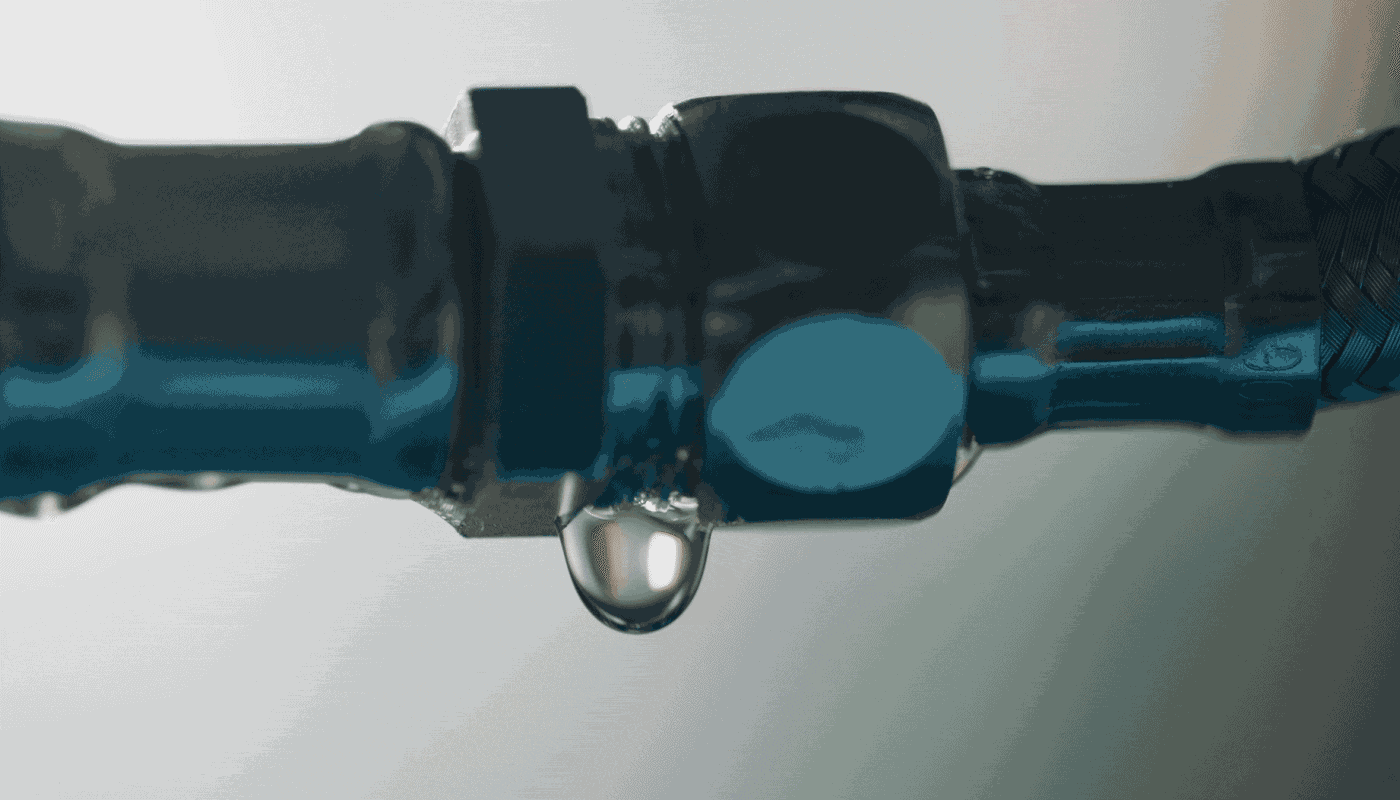 iStock
iStock
When a plumbing disaster strikes, homeowners are often faced with the pressing question: Does homeowners insurance cover plumbing? In short, homeowners insurance typically covers sudden and accidental damage from plumbing issues, but it may not cover the cost of repairing or replacing the actual plumbing apparatus.
This article provides insights into when and how your homeowners insurance may provide coverage for plumbing-related issues, without delving into specific policy details, which can vary by insurer.
Understanding Homeowners Insurance and Plumbing Coverage
Homeowners insurance is designed to help shield you from financial losses due to damage to your home or personal property. It typically covers the main dwelling, attached structures and other structures like fences and sheds. But when it comes to plumbing issues, homeowners insurance can get a bit tricky. That’s why it’s important to choose from the best homeowners insurance companies to help ensure you have the right coverage for your needs.
While plumbing issues that are sudden and accidental, such as a burst of pipes, are commonly covered, comprehending the specifics of your policy becomes fundamental in determining the extent of coverage.
Standard Homeowners Insurance Policies
Standard homeowners insurance policies offer coverage for the contents of your home, including losses due to theft and vandalism, each with predetermined capped amounts. However, there are differences in those predetermined amounts, which are influenced by the type of policy you opt for—either actual cash value policies or replacement cost policies. While an actual cash value policy deducts depreciation from the value of damaged property, a replacement cost policy pays to replace the property at current market costs without depreciation. This distinction could significantly impact your coverage in case of a plumbing disaster.
When it comes to plumbing, standard homeowners insurance typically covers sudden and accidental damage to interior systems, such as walls, floors and appliances, but it generally does not cover the repair of the plumbing leak itself or damage from leaks that develop over time.
Damage to roofs, air conditioning units and foundations resulting from theft, fire, hail, storms and other events specified within the policy is typically covered. Nevertheless, the repair of the underlying plumbing issue causing these problems may not be included.
Is it time to update your home insurance coverage?
Read More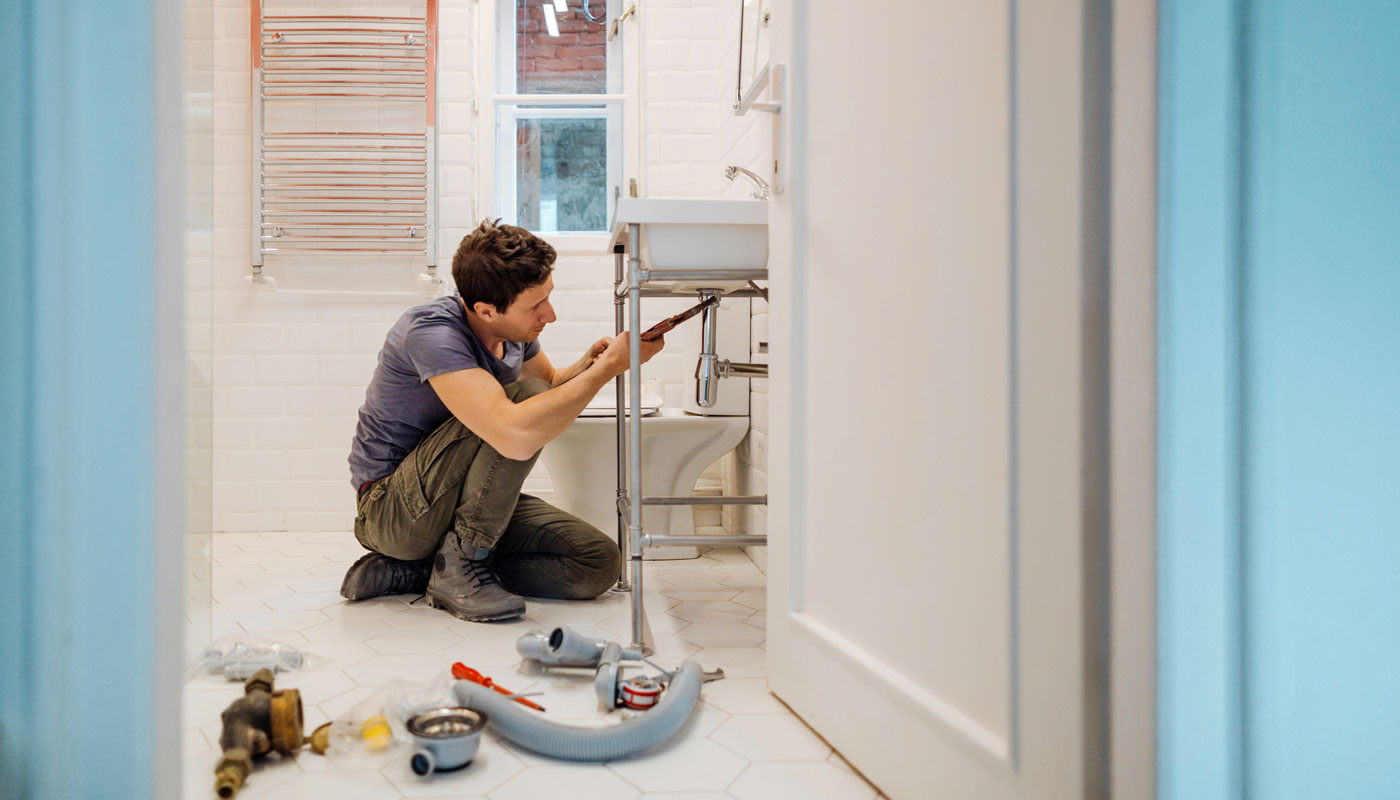 Getty
Getty
Common Plumbing Issues Covered
Homeowners insurance generally provides coverage for sudden, accidental plumbing issues. These include common issues like burst pipes, failed water heaters or a compromised washing machine hose. If the leak was sudden and unexpected, appliance leaks are typically covered by homeowners insurance. However, the key here is that the damage must be sudden and unexpected, not something that happened gradually over time. An overflowing bathtub or sink may also be covered if the blockage is within the plumbing system on your property.
Coverage for burst pipes often includes:
- Repairing damaged drywall
- Replacing ruined carpets
Therefore, knowing the ins and outs of your policy is vital when dealing with a plumbing issue.
Insurance Exclusions and Limitations
Homeowners insurance policies do come with their fair share of exclusions and limitations. They generally do not cover damage from regular home maintenance issues or general wear and tear. This means that if you have corroded older pipes or a leaky faucet that needs fixing, your insurance policy may not cover the damages.
Moreover, if the damage is due to the policyholder’s neglect, such as failing to maintain appliances properly or not addressing known leaks, claims may be denied due to negligence. Specific plumbing issues like mold caused by a slow leak, repair or replacement of the plumbing parts themselves, and gradual leaks are usually not covered by a standard homeowners insurance policy.
Hence, staying informed about these exclusions and limitations can help assist homeowners in avoiding unforeseen costs.
Additional Coverage Options for Plumbing Concerns
While standard homeowners insurance policies cover a variety of plumbing issues, they don’t cover everything. For this reason, homeowners may want to consider additional coverage options like water backup and service line coverage. These can provide extra protection for events not covered by standard policies, such as sewer or gutter backups and sump pump failures.
Let’s explore these additional coverage options to gain a deeper understanding of their benefits.
Water Backup Coverage
Water backup coverage is considered essential for homeowners as it covers common and costly water damage incidents not normally covered by basic home insurance. This coverage protects homeowners from the financial impact of damage resulting from sewer backups, sump pump failures and other related incidents. These events can be devastating, resulting in significant damage and repair costs. In addition to water backup coverage, flood insurance is another important policy to consider for comprehensive protection against water-related damages.
An essential point is that water backup coverage applies to damage on any floor of a home, not just basements, owing to the pervasive nature of water circulation throughout residential plumbing systems. However, the policy does not cover the replacement of failing equipment, like a failed sump pump, but it will cover the water damage caused by the failure. Thus, having water backup coverage can be a lifesaver in the event of a major plumbing disaster.
Service Line Coverage
Service line coverage is another option that homeowners can consider. This coverage insures against unexpected expenses related to damage of service lines on a property, including essential utilities, such as power lines, water pipes and sewer pipes. Imagine waking up one morning to find your front yard dug up due to a burst water pipe. With service line coverage, the costs of excavation, necessary repairs, loss of use, and even landscaping following such an incident are typically covered.
It’s noteworthy that service lines can suffer damage from a variety of factors, including:
- rust
- corrosion
- ground freeze
- root invasion from plants
- accidental damage during landscaping
- rodent activity
- general wear and tear
On average, repairs for damaged service lines can cost between $3,000-$4,000, with potential for higher expenses depending on the severity and the option to replace with ecofriendly materials. Service line coverage often requires a deductible, commonly around $500, and applies to lines that provide service to the homeowner’s residence and related private structures on the property. Considering the potential costs and headaches associated with damaged service lines, having this coverage can provide homeowners with peace of mind.
Factors Affecting Plumbing Coverage and Claims
Several factors can shape your coverage and the claims process when dealing with plumbing coverage and claims. Key among these is the nature of the damage (preventable vs. sudden and accidental), policy deductibles and claim history. Understanding these factors can help you navigate your policy more effectively and make informed decisions when it comes to filing a claim.
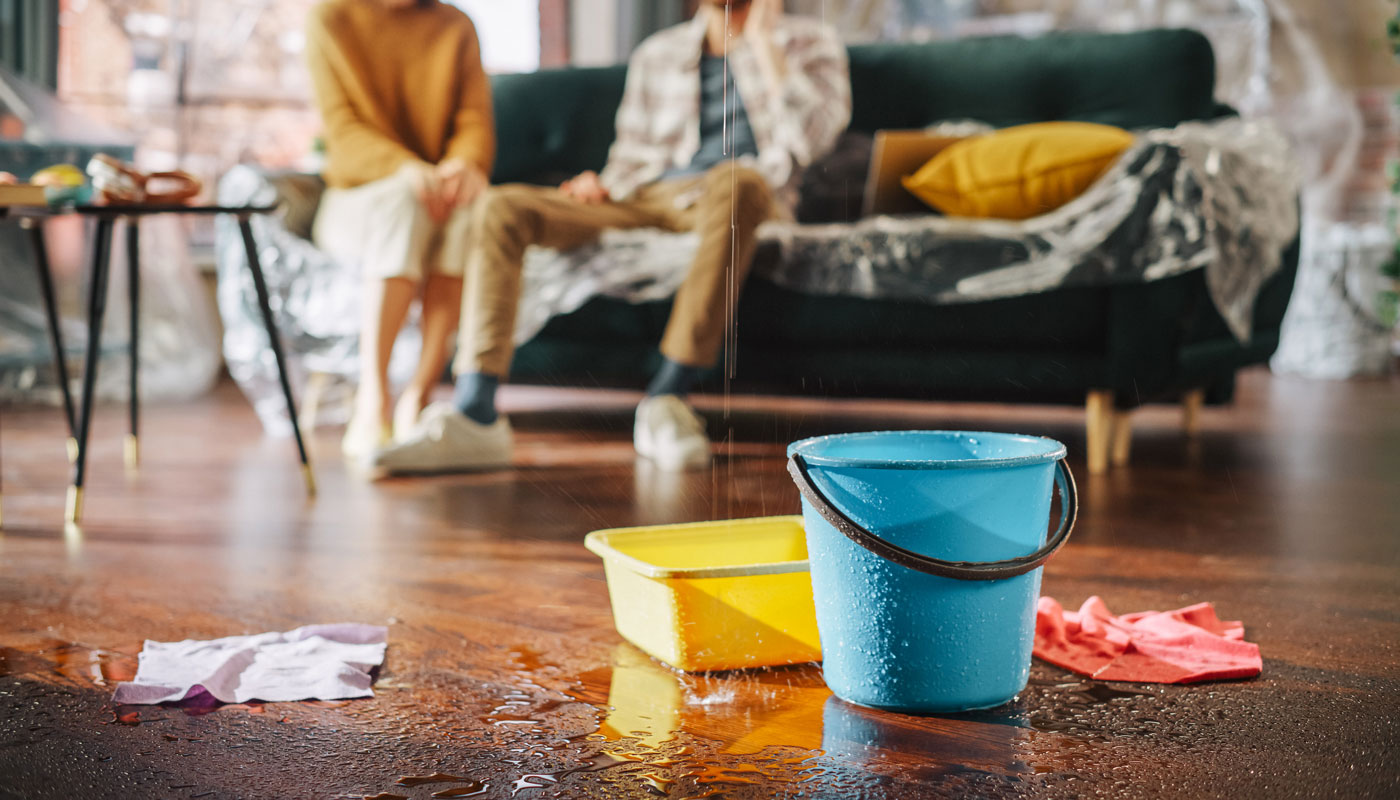 Getty
Getty
Preventable vs. Sudden and Accidental Damage
One of the pivotal elements that can influence your coverage is the nature of damage, whether it’s preventable or sudden and accidental. Most homeowners insurance policies do not provide coverage for water damage caused by preventable plumbing issues. It is important to regularly check and maintain plumbing systems to avoid potential damage. Issues arising from neglected maintenance or intentional lack of care, such as ignoring visible leaks or failing to replace old pipes, fall into the category of preventable water damage.
Regular checks and repairs are emphasized by insurance companies as damage from plumbing problems that could have been prevented through maintenance is often not covered. Thus, it’s essential to keep up with regular maintenance and inspections of your plumbing systems to prevent costly and preventable damage.
Policy Deductibles and Claim Decisions
Another essential element to consider in the context of plumbing coverage and claims is your policy deductible. If the cost to repair damage is less than the policy deductible, homeowners may decide not to file a claim since doing so could also affect future insurance premiums.
Here are some average costs for plumbing repairs in the United States.:
- Minor repairs: $100-$250
- Moderate repairs: $250-$500
- Major repairs: $500-$1,000
- Extensive damage: $1,000-$15,000
These costs can help you determine whether it’s worth filing a claim based on your deductible amount.
Moreover, water damage and freezing claims are among the most expensive for insurers, averaging $12,514 per claim. Multiple claims for minor damages could lead to increased home insurance costs or result in the insurer canceling the policyholder’s coverage.
Take a proactive step to home maintenance. Get this helpful checklist to keep your efforts on track.
Access the Checklist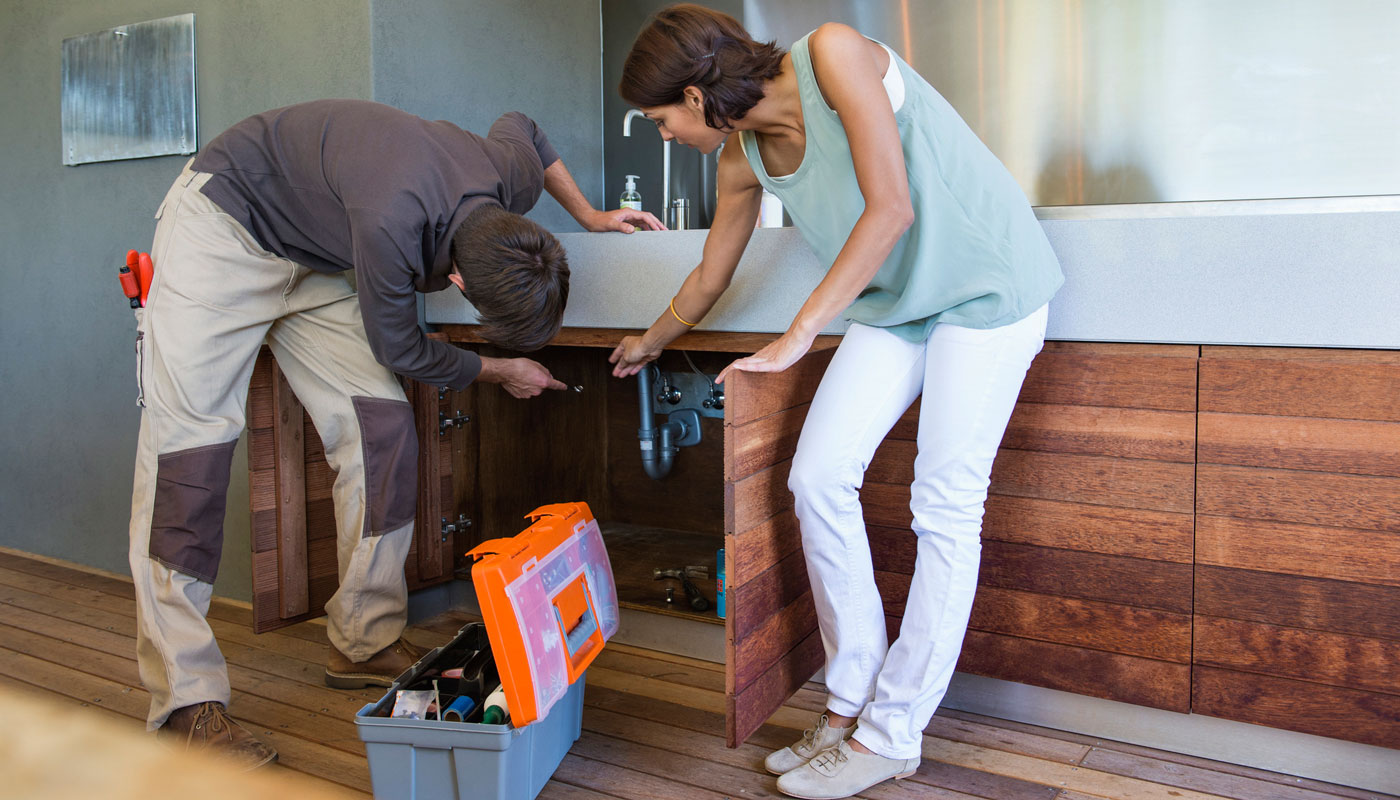 Getty
Getty
Tips for Preventing Plumbing Problems and Protecting Your Home
Preventing plumbing problems and safeguarding your home is about more than just understanding your insurance policy; it also involves taking proactive measures to cover plumbing. Regular maintenance and inspections of your entire plumbing system, winterization and insulation, and utilizing smart home technology can go a long way in preventing plumbing issues and protecting your home.
Let’s explore these areas and discuss some practical measures that you can adopt to protect your property.
Regular Maintenance and Inspections
Regular upkeep and inspections can help spot and rectify plumbing issues before they intensify, thereby ensuring safety and adherence to the code. Professional plumbing inspections can identify early signs of leaks, corrosion and damage, and homeowners should budget for annual maintenance costs and replacement of visibly old and worn plumbing systems.
It’s also worth noting that DIY repairs for complex plumbing problems can often do more harm than good. Following accidental damage, timely repairs are crucial to avoid further damage that may not be covered by insurance. Thus, it’s always best to leave complex plumbing repairs to professionals.
Winterization and Insulation
Winterization and insulation of exposed pipes can be particularly vital in averting freezing and bursting during colder months. Here are some steps you can take to protect your pipes:
- Insulate exposed pipes with sleeves or wraps to decrease the likelihood of freezing and bursting.
- Secure external plumbing by shutting off valves and disconnecting hoses.
- Clean gutters to prevent water from backing up and freezing.
- Seal cracks and gaps in your home’s foundation to prevent drafts that can contribute to freezing risks.
By following these steps, you can help protect your pipes from freezing and bursting during the winter months.
Additionally, take these measures to help prevent indoor pipes from freezing during the winter months:
- Maintain an indoor temperature of at least 55° Fahrenheit.
- Allow warm air to circulate around pipes by opening cabinet doors.
- Shut off the main water valve when away.
- Add antifreeze to drains.
- Reduce the draft through garage doors.
These measures can go a long way in preventing costly damage.
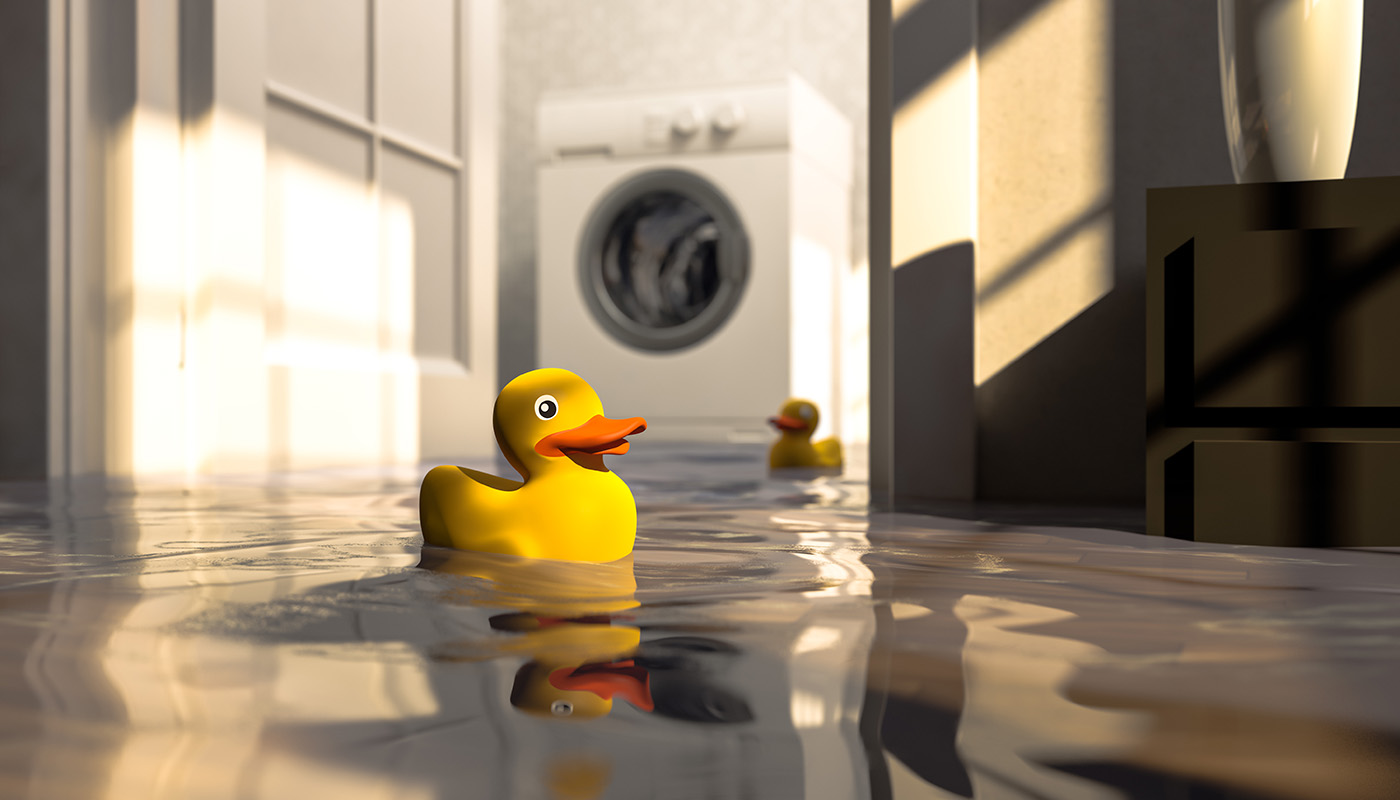 iStock
iStock
What to Do If You Experience a Plumbing Issue
Even with the best preventive steps, plumbing issues can still arise. In such situations, it’s vital to know the correct course of action to minimize damage and ensure a seamless claims process. From documenting the damage and contacting your insurance agent to working with professional plumbers, here are some steps to take if you experience a plumbing issue.
1. Work with Professional Plumbers
In a plumbing emergency, it’s recommended to reach out to a professional plumber who can tackle and resolve the issue while minimizing potential harm to your home. While it may be tempting to try and fix the issue yourself, enlisting the services of a professional plumber can be more cost-effective in the long term as they focus on providing lasting solutions instead of temporary fixes.
When dealing with the consequences of significant plumbing incidents, homeowners may also need to engage a professional water damage clean-up company to manage the aftermath competently. Thus, working with professionals can not only ensure the proper resolution of the issue, but also help mitigate further damage.
2. Document the Damage
As soon as you detect a plumbing issue, it’s imperative to begin documenting the damage. Photos and videos of the damage are helpful forms of evidence for property insurance claims. They can provide important evidence for your insurance claim and help ensure that you receive adequate compensation for your losses.
It’s also recommended not to throw out damaged items until the claim has been processed as insurance adjusters may need to inspect them personally. In the event of a plumbing disaster, having detailed and accurate documentation can significantly streamline the claims process.
3. Contact Your Insurance Agent
Once you’ve documented the damage, it’s essential to reach out to your insurance company as soon as you become aware of the issue. Prompt contact with your insurance agent is crucial to:
- initiate the claims process
- facilitate timely compensation for repairs
- ensure efficient remediation efforts
- prevent any adverse effects on the claims process
Reporting the claim without any delays can help ensure efficient remediation efforts and prevent any adverse effects on the claims process.
Remember, before you file a claim, it’s important to consider the extent of the damage in relation to your policy deductible as well as the potential impact on your future insurance premiums.
As we’ve seen, understanding homeowners insurance and plumbing coverage can be complex, but it’s important for homeowners. Knowing what your policy covers and what it doesn’t is key to helping ensure you have protection in the event of a plumbing disaster. While standard policies cover a variety of sudden and accidental plumbing issues, they often exclude preventable damage and gradual leaks.
Additional coverage options, like water backup and service line coverage, can provide extra protection. Regular maintenance, winterization and smart home technology can also go a long way in preventing plumbing issues.
If you do experience a plumbing issue, knowing how to document the damage, contact your insurance company and work with professional plumbers can ensure a smoother claims process and quicker resolution.
This information is being provided for general informational purposes only. The Auto Club Group does not assume any liability in connection with providing this information.